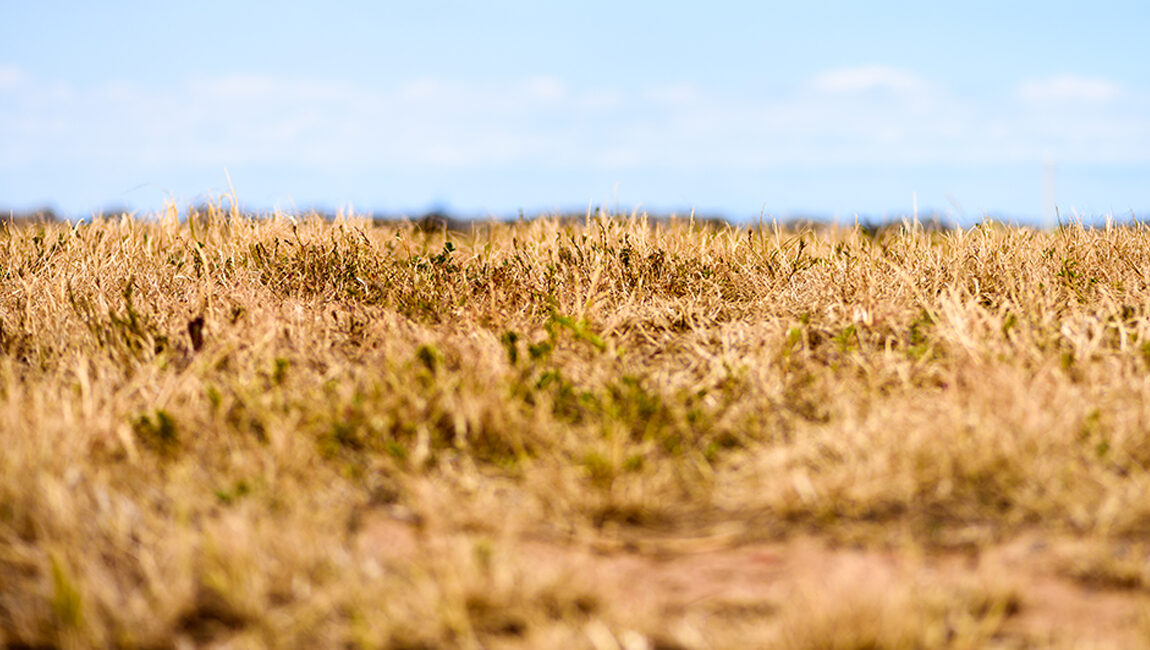
Dry weather conditions have been common for most of the Midwest since 2020. As dry conditions are predicted to rise this year and into the future, let’s dig into what practices, forages, and cover crops may help provide much-needed nutrients for your livestock during dry, or even drought years.
Is Your Pasture Experiencing Dry Conditions?
You may think it is simple to identify when your pasture is experiencing dry conditions, but by taking a look into the soil, it will give you a better idea of what is really going on.
Look for these traits in your pasture to determine if it is being impacted by the dry weather conditions:
- Reduction of aboveground pasture growth.
- The root mass in your plants has been reduced and doesn’t seem to be growing as thick as normal.
- There are minimal seeds/flowers on the plants (if applicable), and they look to be mostly vegetative rather than reproductive.
- Plants have become thin, weak, and may begin to shrivel up.
- Little ability to reserve energy within the plant as the rhizome growth is minimal.
Value In Forage
Forages provide much-needed nutrients to your herd at a lower cost, with so many ways to feed them to your livestock. Just like a recipe, forages can be fed to livestock by simply grazing, chopping into silage, or even rolling into hay. The hay can be stored and fed to livestock throughout winter months or even dry months where certain perennial forages will become dormant.
Is planting a new crop out of the question in dry years or even drought years? Absolutely not!
Although perennial forages may go into dormancy, they are determined to come back year after year. In the meantime, you can provide your herd with the same amount of nutrients by planting annual forages, and the only difference is that these would need to be planted each year to harvest or graze the forage. Annual forages only need to be planted eight weeks or so before you graze or harvest them, and they can survive off of minimal water. Although it isn’t advised to kill off any perennial forages to plant annual forages, it may be the best option in an event where dry weather is projected to occur over a longer period of time.
Solutions For Overcoming Dry Weather In You Pasture
Even though during these times you may get discouraged, it is important to continue to do your research on additional tactics you can put in place to provide those nutrients to your herd.
Tactic #1: Make sure that you have established the most up-to-date grazing plan for your herd. Weather events have been known to take a toll on your pasture. It may be best advised to hold off on releasing your herd into the pasture until your pasture has become more established or an annual forage has been planted to provide your herd with the nutrients it needs. Do not over-work your pasture in this time or you may kill it off completely.
Tactic #2: Be sure to stay on top of weed management during dry weather conditions as you want to avoid overpowering your crops with weeds. Prioritize pastures that had some re-growth before the plant dormancy took place, as these forages and cover crops can still provide minerals and nutrients to livestock.
Tactic #3: There are a variety of alternative forages that can be planted during dry weather events that will promote weight gain and needed nutrients. Contact us at Missouri Southern Seed, and we will be happy to discuss our forage and cover crop options that may be most beneficial for your herd.
If irrigation is an opportunity for your operation, be sure to check out these solutions!
Questions to Consider
- What Varieties Should I Be Planting?
The best annual forages to plant in a drought year include oats, barley and millet. Cover crops are also an option, though the selection is narrow in dry years. The best cover crops to plant in dry years include foxtail millet and brassica species such as turnips, radishes, cabbage and kale.
- When Is The Right Time To Plant?
It is advised to plant forages and cover crops once the soil temperature has reached between 40 and 50 degrees as it will prevent any risk of freezing from those cooler temperatures, and any sign of frost will be out of the forecast.
- What Does This Year Have In Store?
If you’re looking for insight as to if your location is predicted or is currently experiencing more than normal dry conditions, be sure to check out this drought monitor to see where your state ranks.
Missouri Southern Seed is here to help you find a solution that may be best for your operation during these tough times. We have a variety of high-quality forages and cover crops that will provide the nutrients your herd needs. Give us a call at 1(800) 844-1336 and let’s discuss options.
